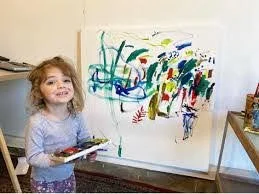What’s in a drawing anyway?
Is drawing something you enjoy?
Or is drawing something you avoid because
you’ve convinced yourself that you aren’t a good artist?
I hear you!
You’re not alone!
Art hasn’t been one of my strengths. Once I tried to teach myself to draw animals, and just as I was beginning to feel confident enough to show my drawing, I was laughed at. What was so funny? I loved how my lion looked. But I was told his eyes were crooked.
Done. Door closed.
Imagine my surprise and terror when I learned during my Somatic Therapy Training that one of the important components of this work is:
“The Path of Expression.”
Ugh. Drawing!!!
I panicked.
The face of my lion with the crooked eyes came into view.
It took a lot of encouragement for me to realize that this art experience was different.
It didn’t matter if my lion’s eyes were crooked.
What mattered was what I saw in my drawing and how I felt.
Here’s an example of using The Path of Expression in my work with young children:
Five-year old Caden was having an emotional day.
This resulted in numerous conflicts with his peers and
complaints about his behavior.
“Caden squeezed my hand.”
“Caden made a mean face at me.”
I watched as his friends made many attempts to resolve the issues among themselves.
I saw the “shut down” look on Caden’s face.
Hmmmm….
Let’s try something different.
I invited Caden to join me in the quiet room. Time for a break.
I offered him paper and markers and asked him to draw how he was feeling.
He started drawing right away.
After 10-15 minutes he said he was finished.
I asked him what he saw.
“I see a roller coaster.
(from an adult’s perspective it looked like scribbles)
“The roller coaster is going really fast, it’s going out of control.”
He spontaneously started to use his arms and hands to show me how the roller coaster was moving.
After a few minutes I asked him if there was something
that the roller coaster needed.
“It needs a conductor,” Caden replied.
He drew a conductor onto his picture.
“What is the job of the conductor,” I asked him.
“To slow down the roller coaster,” he replied.
“How will he do that?” I asked him.
“He needs a pedal,” said Caden.
He drew a pedal onto the roller coaster.
“What’s happening now?” I asked.
“The roller coaster is slowing down.”
I watched as his movements slowed down.
“Now I feel better,” Caden said.
Wow.
In just a few minutes Caden shifted from a dis-regulated state to a more regulated state simply through drawing.
What’s in a drawing?
Anything and everything we hold in our bodies, minds and souls.


